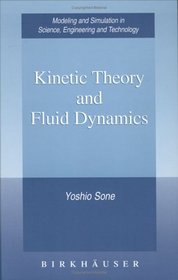Search -
Kinetic Theory and Fluid Dynamics
Kinetic Theory and Fluid Dynamics
Author:
This monograph gives a comprehensive description of the relationship and connections between kinetic theory and fluid dynamics, mainly for a time-independent problem in a general domain. Ambiguities in this relationship are clarified, and the incompleteness of classical fluid dynamics in describing the behavior of a gas in the continuum limit?re... more »
Author:
This monograph gives a comprehensive description of the relationship and connections between kinetic theory and fluid dynamics, mainly for a time-independent problem in a general domain. Ambiguities in this relationship are clarified, and the incompleteness of classical fluid dynamics in describing the behavior of a gas in the continuum limit?re... more »
ISBN-13: 9780817642846
ISBN-10: 0817642846
Publication Date: 8/12/2002
Pages: 368
Edition: 1
Rating: ?
ISBN-10: 0817642846
Publication Date: 8/12/2002
Pages: 368
Edition: 1
Rating: ?
0 stars, based on 0 rating
Genres:
- Science & Math >> General
- Science & Math >> Mathematics >> General
- Science & Math >> Mathematics >> Applied >> Differential Equations
- Science & Math >> Physics >> Dynamics >> Fluid Dynamics
- Science & Math >> Physics >> General
- Science & Math >> Physics >> Mathematical Physics
- Science & Math >> Physics >> Mechanics
- Engineering & Transportation >> Professional Science >> Mathematics >> Applied >> Differential Equations
- Engineering & Transportation >> Professional Science >> Physics >> General
- Engineering & Transportation >> Professional Science >> Physics >> Mathematical Physics
- Engineering & Transportation >> Professional Science >> Physics >> Mechanics
- Mechanical >> Fluid Mechanics
- Aerospace >> Gas Dynamics




